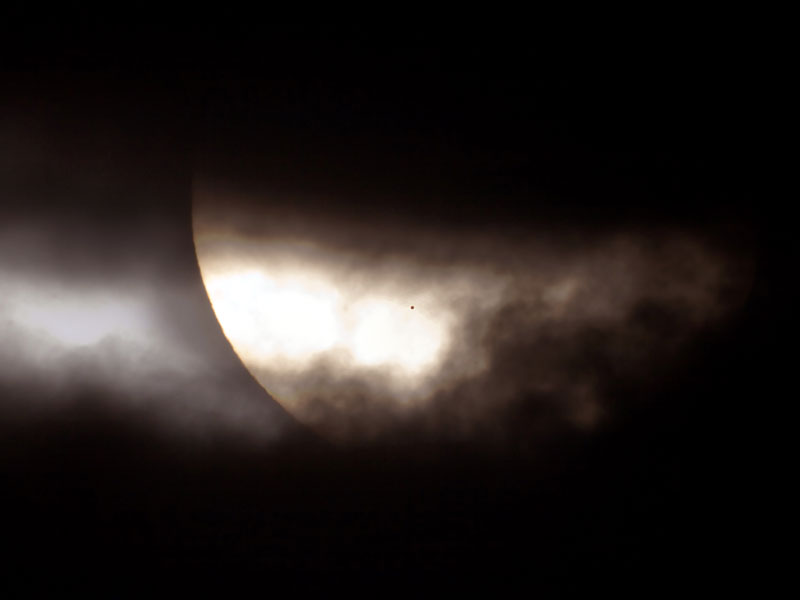Credit & Copyright: David Cortner
Explanation:
What's that dot
on the Sun?
If you look closely, it is almost perfectly round.
The dot is the result of an unusual type of
solar eclipse that occurred last week.
Usually it is the
Earth's Moon that eclipses the Sun.
Last week, for the first time in over three years, the planet
Mercury
took a turn.
Like the approach to New Moon before a
solar eclipse,
the phase of Mercury became a continually thinner
crescent as the planet
progressed toward an alignment with the Sun.
Eventually the phase of
Mercury dropped to zero and
the dark spot of Mercury crossed our parent star.
The situation could technically be labeled a Mercurian
annular
eclipse with an extraordinarily large
ring of fire.
From above the
cratered planes
of the night side of Mercury, the Earth appeared in its fullest phase.
Hours later, as Mercury continued in its orbit, a slight
crescent phase appeared again.
The next Mercurian solar eclipse
will occur in 2016.
1999 2000 2001 2002 2003 2004 2005 2006 2007 2008 2009 2010 2011 2012 2013 2014 2015 2016 2017 2018 2019 2020 2021 2022 2023 2024 2025 |
Январь Февраль Март Апрель Май Июнь Июль Август Сентябрь Октябрь Ноябрь Декабрь |
NASA Web Site Statements, Warnings, and Disclaimers
NASA Official: Jay Norris. Specific rights apply.
A service of: LHEA at NASA / GSFC
& Michigan Tech. U.
|
Публикации с ключевыми словами:
Mercury - transit - clouds - Прохождение - Солнечное затмение - Соединение планет
Публикации со словами: Mercury - transit - clouds - Прохождение - Солнечное затмение - Соединение планет | |
См. также:
Все публикации на ту же тему >> | |
